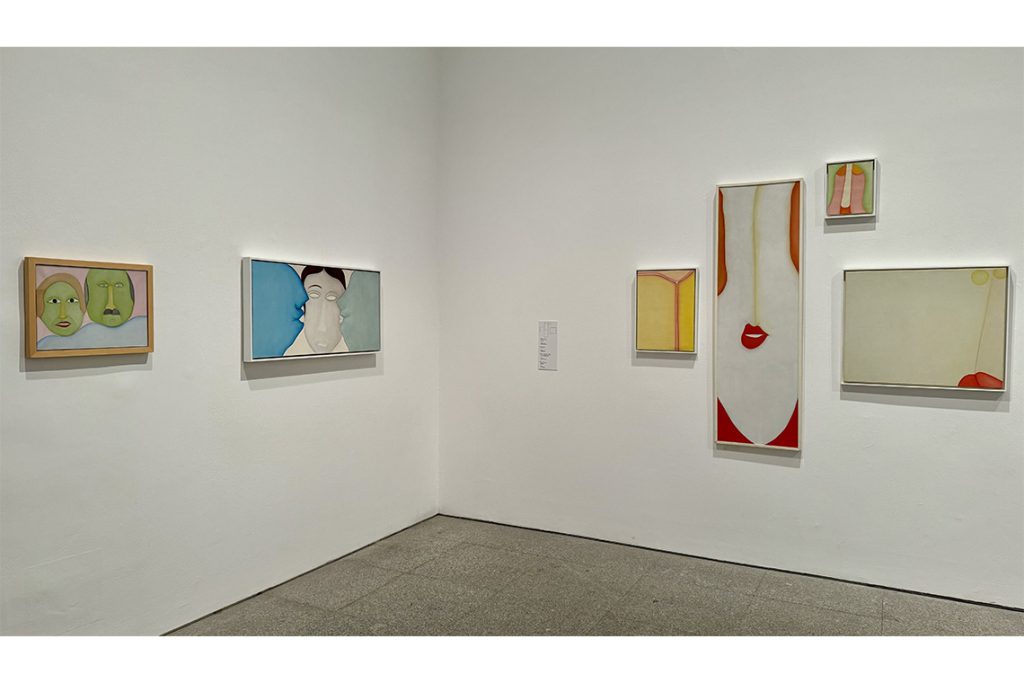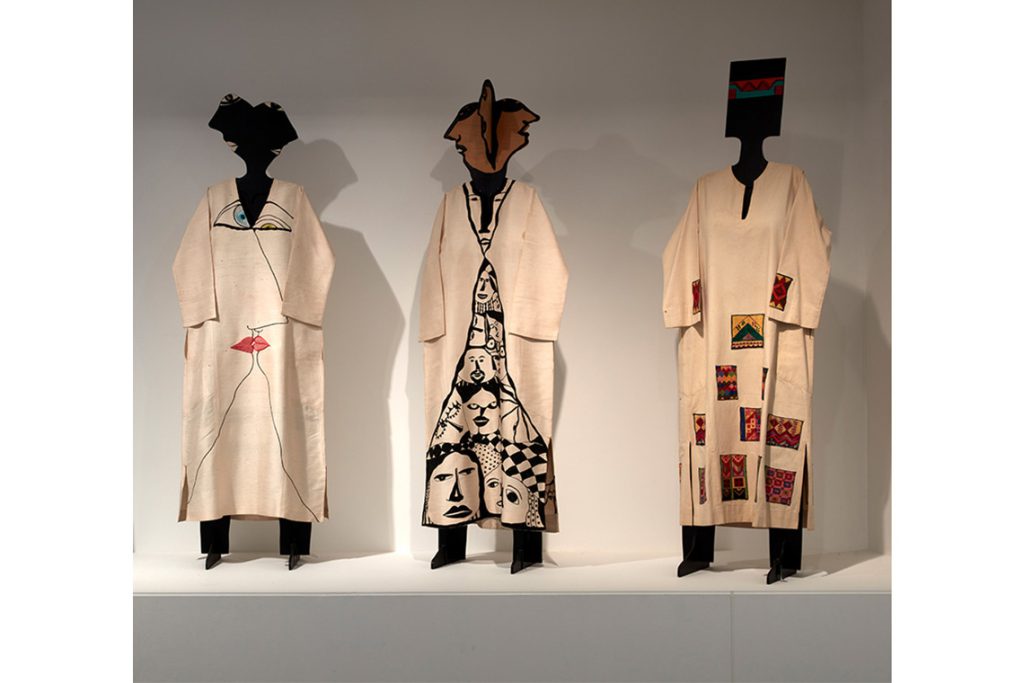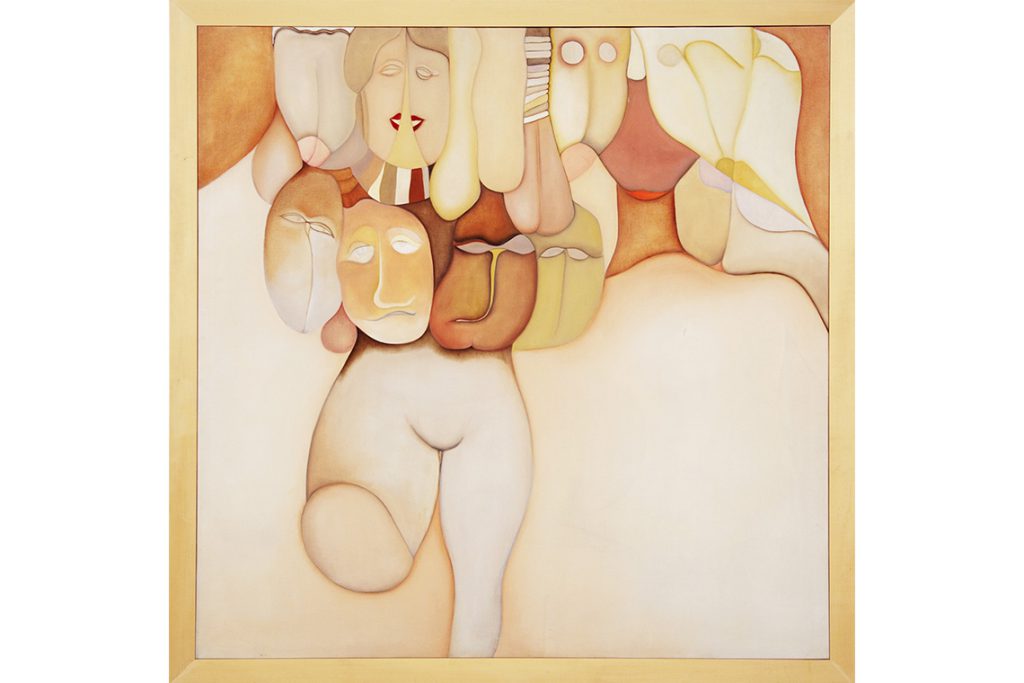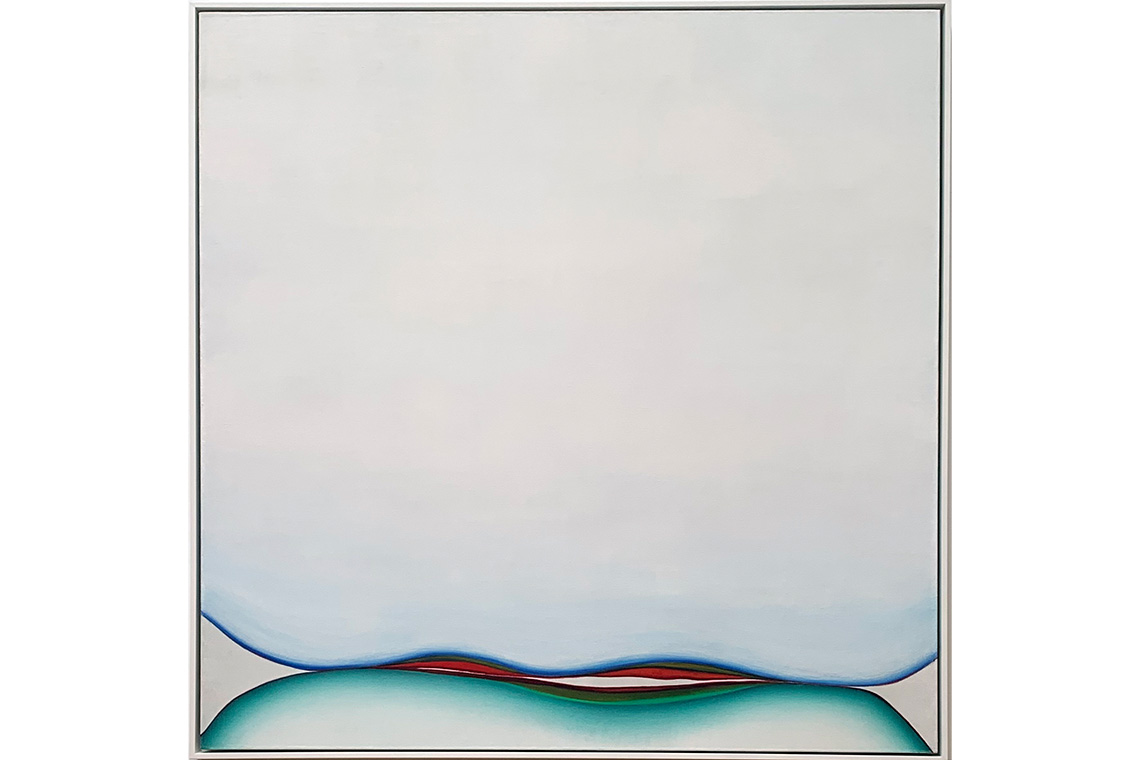A Life in a Few Lines at the Museo Reina Sofía is an ode to a most remarkable woman and artist, a chronicle of a life profoundly experienced and felt.
Huguette Caland, née El Khoury, lived as freely and authentically as her art would suggest. A Life in a Few Lines, the first major European retrospective of Caland’s work at Madrid’s Museo Nacional Centro de Arte Reina Sofía curated by Hannah Feldman, chronicles not only her artistic journey, but through it, a life remarkably lived.
There are few things to say about Huguette Caland that have not been said before. Born into a political family in Beirut (her father was the first president of Lebanon), she came to art in her thirties, when she enrolled at the American University in Beirut. In her early twenties, Caland married the nephew of a political rival of her father, taking his last name in a form of rebellious emancipation which would serve as a driving thread throughout her work and life.
Throughout the exhibition, we are brought deep into Caland’s world, with texts throughout chronicling her life, detailing anecdotes and marking key moments. One of the first works we encounter is a radiating red canvas, Soleil Rouge / Cancer (Red Sun / Cancer) (1964), painted after Caland’s father succumbed to the disease, which stands out for its non-linear, pulsating quality – at odds with the more typically line-based work that would define her artistic career. Soleil Rouge, and her father’s death, both marked the beginning of a new chapter in Caland’s life, one of true freedom from expectation and convention.

Image courtesy of Museo Nacional Centro de Arte Reina Sofía photographic archive
Not long after his passing, Caland’s artistic career truly began. It was a trajectory that saw her live boldly outside of convention, eventually leaving Beirut and her home to live as an artist in Paris, where she would begin some of her most celebrated work, including the Bribes de corps series and collaboration with Pierre Cardin on a number of kaftans often featuring abstracted or overt pictorial references to the human figure. According to curator Hannah Feldman, “Moving to Paris in 1970 was extremely important for her, not necessarily because her career was established in Paris – indeed, she did not exhibit frequently and struggled to find an audience for her work – but because it gave her the freedom to dedicate herself to the full-time life of being an artist and of ‘stretching her wings’ so to speak, aesthetically, intellectually, psychologically, culturally, socially and sexually.”
A friend later described Caland as an “easy” artist to understand, particularly in terms of her early work. Indeed, individual pieces from Bribes de corps, which abound in one of the exhibition’s largest rooms, are engaging and approachable with their colourful and eye-catching quality, reflecting what appears to be a certain insouciance and joyful sexuality about their creator.
The straightforward visuals of Caland’s work serve well to draw in audiences, but this intelligibility is also often deceptive, hiding deeper feelings and struggles that are not apparent without intimate knowledge of the inner workings of the artist’s world. Where the exhibition at Reina Sofía excels is in allowing us what feels like unrivalled access to this private realm. We learn, for example, about Caland’s early struggles with her body image, growing up in the public eye because of her father’s career. What appears to be a celebration of sexuality takes on new meaning. Works like Check Point (Bribes de corps) ou Sourire interrompu par le départ (1974) suggest the weight of flesh against flesh. Yet the presence of gaps between what feels like one mound of flesh resting delicately on top of the other alludes to a certain hesitance, more explicitly referenced in the title pointing to the interrupted act of smiling as someone or something departs.

Image courtesy of Museo Nacional Centro de Arte Reina Sofía photographic archive
One of Caland’s most compelling works is Moi, Moustafa et Paul (Me, Moustafa and Paul) (1970). It depicts her caught between two men: her husband Paul, and her lover Moustafa, Paul’s best friend, who lived with them in Beirut in defiance of convention. Both men kiss Caland on the cheek, as she looks out, eyes blank, one eyebrow missing. Physically caught between two men, a sense of being caught between two worlds, two cultures and ways of being also emanates from this form of self-portrait. To know Huguette Caland’s work is to know her, intimately, and to know her lovers. The body for Caland was not just a body, whether female or male, it was a place where desire, dreams, politics and stories intermingle, a landscape to reflect her innermost thoughts and feelings. “I’m not sure the body meant just one thing for Caland,” muses Feldman. “She was sometimes at war with it, though she acknowledged that it could bring her great physical pleasure, or trying to escape it, to find a space for a self that was not constrained by physical limits or social conventions. It was also something collective, made up of life experiences and interactions. There is also the part of her body that was a mother, an aspect of her biography often ignored, and later, as she aged, it became an avenue to contemplate death.”
Caland had a remarkable ability to transform marks on paper or canvas into powerfully embodied emotional states. Some of her simplest depictions are the most impactful, as in the series of sketches, white pencil on black paper, that depict memories of her time with her Romanian lover, George Apostu, a sculptor with whom she lived for several years. With all the rawness of love, lust and loss, Caland depicts the faded memories of the physicality of a departed lover’s body. The lines “réminiscences d’amour” are all the more heart-wrenching when we learn that she and Apostu did not speak a common language. There is an aching tenderness in the faintness of the pencil mark, as we feel Caland’s desperation to reembody these memories of the flesh onto a piece of paper, grief and longing all captured in a few pencil strokes. Apostu’s death in 1986 led Caland to move to California, where she would live until 2013.

Despite living most of her later life away from Lebanon, Caland remained involved and active in the turmoil facing her home country. A Life in a Few Lines reasserts her as an Arab artist, implicated both through her artistic work and philanthropic endeavours in the region. Guerre incivile (Uncivil War) (1981), a figurative abstraction depicting the Civil War in Lebanon, and probably her most explicitly political work, channels the confusion, violence and disembodiment of war. Not content to be a passive observer in a situation of unrest, Caland had earlier (in 1969) cofounded Inaash, an NGO designed to help Palestinian women in refugee camps in Lebanon earn income through embroidery work.
Caland’s later works, executed during her time in Venice, California, suggest a desire to situate herself outside of her body. They include a series of abstracted, layered urban landscapes, more grounded in the outside world – which itself could become a landscape for emotion. Cityscape (1999), a predominantly grey canvas, lacks the pleasing quality of Caland’s earlier more colourful works, but provides perhaps more visual depth, a reflection of a life at this point well lived. Although her work thrives in the nearly excruciatingly intimate and in a discomfiting rawness, there is something more quiet and moodily reflective about these later pieces, as well as a longing for place. Caland’s final years in California, before her return to Beirut (where she would die in 2019), saw blue dominate her canvases. These became almost tapestry-like as she wove together memories and reflections on her youth while looking towards what feels like her final adventure, a death marking the next chapter for this woman who lived a complex and layered existence. “Caland worked entirely in her own style, never copying or imitating anyone else. She worked her whole life, tirelessly, and with little official recognition, but always believing in herself and in her work,” Feldman explains. “She was fearless – or, rather – she was afraid, but she persevered because she believed in what she was doing.”
Caland felt deeply, moving with the times and her environment, yet all the while staying true to her own self and belief in the freedom of things. Much more than an exhibition, A Life in a Few Lines is a profoundly moving portrait of this formidable woman, presenting in almost painfully honest detail her life, loves and politics. It feels like rediscovering a long-lost friend, someone whom one might strive to be more like, to live as honestly and genuinely as, taking everything life has to offer and throwing it back out into the world.



